Sintra is Magical. A land of palaces, of lush and green landscapes, of culture and myths, art and romance that combined, make it so unique and well worth a visit
Several romantic figures have passed through Sintra. From literature to music, the town of Sintra has inspired various personalities and dazzled others with its mystical and charming environment. Luís de Camões referred to Sintra in his Os Lusíadas chronicle, as a mythic land ruled by water nymphs.
Kings chose Sintra for their summer holiday, transforming it into what fairytales are made upon
If your kids want to see fairytale magic, hold off on that trip to Disneyland and visit Sintra
Considered the 9th of the most beautiful palaces in the world! A World Heritage Site
Pena Palace is a real enchanted palace. It was built on the site of a former convent of friars from the Order of St. Jerome. A fantasy from King Fernando of Saxe Coburg-Gotha married to Queen D Maria II. A palace with a complexity of styles: neo-Gothic, neo-Manueline, neo-Islamic and neo-Renaissance.
The park grounds around the palace are equally worth seeing. They are beautifully laid out, with many exotic plants, beautiful viewpoints and a myriad of trails leading through it all.
D. Fernando de Saxe Coburgo-Gotha married D. Maria in 1836, becoming Prince Consort of Portugal. From this union, 11 children were born, among them the future kings D. Pedro V and D. Luis I.
He avoided getting involved in the political landscape, preferring to dedicate himself to the arts, idealising and building the Pena Palace. A lifelong project that he embraced with dedication and good taste.
D. Maria II died in 1853, and D. Fernando II serves as the regent of D. Pedro until 1855.
In 1869, D. Fernando married for the second time, Elise Hensler, an opera singer and single mother with whom he fell in love after seeing her at the Royal Theatre of São Carlos, in an opera by Verdi. She was granted the title of Countess of Edla, and with him shared the passion for the Pena Palace, dedicating herself to its gardens, introducing botanical species from the four corners of the world. With his death, D. Fernando would leave his wife, as inheritance, the Pena Palace.
The Pena Palace was also the residence of D. Carlos and D. Amélia (1890-1908 / 1910). King D. Carlos chose for his quarters the old Chapter Hall of the Manueline convent, as well as some contiguous compartments which had served as servants’ quarters at the time of his grandfather, D. Fernando II. D. Carlos stayed in the more modest rooms, leaving the noblest ones on the upper floor for the use of his wife, D. Amelia. Nobility or want of some peace and quiet?
Avoid the crowd – Get your ticket here
Its interior tells not one, but several stories about Portugal.
Of all the Palaces built during the Middle Ages, by the Portuguese monarchs, only this one remained practically intact up to the present day.
The decor has exceptional value, combining furniture, paintings and the most extensive collection of Hispanic-Muslim tiles in Europe.
Visiting Sintra’s National Palace requires, however, that you also spend a lot of time looking up, for who can resist the beauty of its ceilings?
The Sala dos Cisnes (Swan Room), with its ceiling painted with white swans in various positions, was built by D João I and is still one of the largest stately rooms of the Portuguese palaces.
The Coat of Arms Room, so named because D Manuel I requested that the coat of arms representing the 72 Portuguese high nobility families be painted on the ceiling. If some people seem to linger an unusual time here, they are probably Portuguese trying to find their family name.
The Magpie room dates back to the 15th century. Its ceiling, painted with 136 magpies holding by their beak the targa with the motto of D João I “For the Good” and at their feet the rose of the House of Lancaster, which his wife, Philippa, belonged. Rumour has it that D João I was caught, by the Queen, giving an innocent kiss to her lady in waiting. Word of this quickly spread from among the ladies of the court and such a loud fuss made, that D. João I had this ceiling painted with the magpies, as a symbol of its loquacity and the phrase “For the Good” to preserve the innocence and purity of the lady in waiting.
It was also here, that D Sebastião listened to Luís de Camões, the great Portuguese writer, author of Lusíadas (The Lusiads), recounting his work, an epic poem that depicts the Portuguese discovery of the sea route to India by Vasco da Gama (1498).
The Chapel dates back to D. Dinis, and both its tiled floor and wooden ceiling are among the oldest examples of Mudejar craftsmanship in Portugal.
The Prison Room of D. Afonso VI. It is the oldest room of the palace and the only one to have iron railings in its windows. D Afonso VI was held prisoner here, by order of his brother D Pedro II, and here he remained nine years until he died
Outside, the two large conical kitchen chimneys 108 feet high, are the symbol of Sintra. D. João I ordered these, at his wife’s, D. Philipa of Lancaster, request. She did not appreciate cold food nor the smoke entering the palace.
Avoid the crowd – Get your Ticket Here
A place with a spirit of its own.
Quinta da Regaleira is one of the most enigmatic monuments of the Sintra Landscape. It is the result of a mythological quest of its owner, António Augusto Carvalho Monteiro and the talented Italian architect Luigi Manini.
The imagination of these two unique personalities created a chimaeric house glorifying Portuguese history influenced by the mystical and esoteric traditions.
It depicts the adventures of the Knights Templar, and the ideals of the masters of Freemasonry. The influence and combination of various styles such as gothic, manueline and the renaissance can keep you enthralled and puzzling behind the meaning of each detail
Monserrate Palace is a remarkable testament to the eclectic spirit of the 19th century.
Monserrate is one of the most beautiful landscapes created during the Romantic period.
Designed by Sir Francis Cook, the Palace of Monserrate combines Gothic and Indian influences as well as Moorish traces. Exotic and plant motifs harmoniously enhance all its decoration.
The gardens are a notable botanical collection. It received species from all corners of the world, then planted according to their geographical origin.
Avoid the Crowd – Get your Ticket Here
Military Fortification
Positioned high up in the Serra de Sintra, the Moorish Castle dates back to the time of the Muslims in Portugal, 8th century. Conquered by the first king of Portugal, Afonso Henriques, in 1147.
Overlooking Sintra, it acted as a watchtower to protect Lisbon and the neighbouring area
Wear comfortable shoes when visiting Sintra
Wander through Sintra’s traditional narrow streets and local shops, enjoy the coolness and the fresh scent of flowers and earth.
Take a carriage ride, have a picnic underneath a shady tree just, don’t leave without tasting a Travesseiro de Sintra at Piriquita, a local delicacy, sweet and mouth watering
The cork convent
Capuchos Convent is a tiny 16th-century Franciscan monastery in the Sintra hills. Boulders form parts of the walls, and the small, sparse monks’ cells only concession to comfort is the cork lining on some of the walls.
A hermitage, built amid the rocks, embodies the ideal of universal fraternity held by its inhabitants, the Franciscan friars.
The story behind the convent
On a hot day, while hunting D João III, stopped to rest under the shade of a large rock. In his dream, he saw angels worshipping a cross engraved on a boulder. When he woke up, he ordered that a convent be built here: The convent of the Sacred Cross, and donated it to the Franciscan order.
The Castro Family, who at the time owned the land, carried out the king’s order. In 1560 the Convent of the Sacred Cross, also known as the Convent of Capuchos (Hoods) due to the habit the monks wore, was built
Masses were held here. However, beyond the church’s wooden balustrade, that divided the Holy from the profane, only the monks were allowed.
Due to the vows of extreme poverty and simplicity common to the Franciscan order, the only three objects the monks brought with them when entering, were the habits they wore, the Bible and the image of the Saint they worshipped, to place in their cell.
That was the only ornament that the cell would have for these spare rooms, lined with cork to protect from the damp and cold, would be empty of all else. The narrow and small doors, were not because the monks were small but rather to have them enter the room in a bent position as reverence and humility. They would sleep on the floor on hay or cork mats.
They would have one meal a day, consisting of what they could produce, vegetables they could grow, and charity. They would only accept want they needed, all else they considered superfluous would be returned. An account of this is D. Catarina, wife to D João III, sent over two cheeses. The Friar cut one in half, thanked her, and returned the rest, as only one half would be needed for the week.
This convent amazingly entwined with is scenery is to be leisurely explored. What may seem simple and depleted has many stories to tell. The sophistication of its latrines, with running water; the infirmary surround with herbs and a fireplace to make the infusions, to treat not only the body but also the soul. A room with no windows and smeared walls with ashes to keep it dark would serve as the penitence room, to cleanse the soul.
The dining room has only a slab of rock for a table, given by D. Henrique. He did not send them a table and chairs for, he knew, they would not accept such comfort.
Pilgrims were frequent and well-received, and some would even stay housed with them, in a room with a few more homely comforts.
This beautiful palace is not in the middle of the village or within walking distance or even of easy access but it is a beauty and definitely to be put on the “What to visit in Sintra” list. It is not so mainstream as the other palaces, and as such less crowded.
The National Palace of Queluz, in Sintra, and its historical gardens illustrate the evolution of the Court’s tastes in the 18th and 19th centuries, a period that was marked by the baroque, rococo and neoclassicism. The gardens are embellished with fountains and ornamental ponds, where sparkling water spouts forth from mythological figures.
Built in 1747 at the orders of the future King Pedro III, the consort of Queen Maria I, the Palace of Queluz was initially conceived as a summer residence, becoming the royal family’s preferred place for their leisure and entertainment. They lived there permanently from 1794 until their departure for Brazil in 1807, as a result of the French invasions.
Many of the rooms are decorated in the rocaille style, such as the superb Throne Room, its walls lined with mirrors and magnificent carved gilded woodwork.
From Country House to Royal Palace
In 1747, D Pedro rebuilt and transformed the Country House in Queluz into a Summer Palace under the direction of Architect Mateus Vicente de Oliveira, who was responsible for the creation of the Chapel and the Music Room. However, the Marquis of Pombal requested this architect services for the reconstruction of Lisbon after the earthquake of 1755. Works were resumed by the architect and jeweller Jean-Baptiste Robillion (1760-1782).
In 1760 D. Pedro married his niece D Maria Francisca, Duchess of Bragança, who ascended to the throne, in 1777 as D Maria I.
D Pedro III and D Maria I, while in residence in the palace, maintained a lively court with effusive celebrations, dances, theatres, concerts, royal birthdays, equestrian shows, bullfights and fireworks, to which the versatility of the spaces greatly contributed to the tremendous success of all these events.
The Palace’s interior decoration is refined, where the craftsmanship in gilded carving, mirror-lined walls and immense and sparkling chandeliers have an impressive decorative effect. The simple frescoes are of extremely good taste, with soft colours and intrinsic designs and deserve careful observation.
The exterior, geometrically designed, with formal boxwood gardens are French-inspired and thrive around lakes and statues from Italy.
Worth mentioning is also the Channel, whose engineering enabled the retention of following river water, providing an artificial channel where the family would sail in gondolas. The tiles that line its banks are of hunting scenes, landscapes and bucolic themes.
In 1786 D Pedro III died and two years later his son and crown prince, D José.
In 1794, with the fire of the Real Barraca da Ajuda (The Royal Shack) where the Royal Family lived since the earthquake of 1755, the widow, D. Maria I, moved to the Palace of Queluz, which became her official residence.
However, all these unfortunate events leave a grief-stricken queen too weakened to govern. In 1792 she was decreed mentally incapable, handing over the reign to the Prince Regent, D. João VI married to the Spanish infanta D. Carlota Joaquina de Bourbon.
In 1807, the Royal Family, and of the court, fled to Brazil, a day before the invasion of Lisbon by the Napoleonic troops, under the command of General Junot.
The Palace of Queluz is thus deprived of many of its assets, taken by the Royal Family to Brazil, and closed up, without, however, having run the risk of being considered as a good option for Napoleon to settle in.
In 1822, a year after the return of the court to the Palace of Queluz, the eldest son of King João VI, who had stayed in Brazil as Regent, declared the independence of Brazil and named himself Emperor D Pedro I.
In 1826, with the death of his father D João VI, D Pedro IV (D Pedro I, Emperor of Brazil), is acclaimed King of Portugal but abdicates in the name of his daughter D. Maria II. However, D Miguel, uncle of D Maria II declares himself the Absolute King of Portugal.
In 1831, D Pedro IV resigned the empire of Brazil to his youngest son, D Pedro II, and returned to Portugal to fight for his daughter’s right to the throne.
This civil war (1832 – 1834) leads to the victory of the Liberals over the Absolutists and the ascension of Dona Maria II to the throne
D Pedro IV dies, in 1834, in the room in which he was born, in the Palace of Queluz: The Don Quixote room. So named for displaying paintings with the life scenes of the literary work of Don Quixote de la Mancha, by Cervantes.
Built in 1904, the centenary Sintra Tram rattles along its route, from Sintra (Vila Alda) to Praia das Maçãs. It is a 45-minute journey along 13km with 8 stops. Operates all year round with reinforcement during the summer months
“Where the land ends and the sea begins”
The westernmost point of Europe.
Situated at a latitude of 38º 47 North and a longitude of 9º 30 West. Its lighthouse is an important coordinate for those sailing along the coast
The western coast is a mixture of sandy beaches and rocky cliff promontories: around Cabo da Roca, cliffs are more than 100 metres in height, and cut into crystalline rocks.
For the fit, nice trekking paths to be explored
The Queijada de Sintra. Made from fresh cheese, eggs, sugar, flour, cinnamon and wrapped in a crispy pastry. The story has it that it was D. Carlos who challenged a baker and his wife to make this delicacy. The bakery was called Piriquita and years later, the bakers’ daughter created the Travesseiro, a pastry with egg and almond sweets. Today Pastelaria Piriquita is still running and undoubtedly a mandatory stop on your Sintra tour
Sintra is an excellent option for a day trip from Lisbon and well worth the detour. It can be easily accessed by car, train or bus.
By car, you can go via Cascais, drive through the beautiful Guincho road that will take you alongside the coastline up to Cabo da Roca. To do so, you may rent a car here or choose one of our tours.
The train (CP – Comboios de Portugal) will get you from Lisbon to Sintra station. Catch the Lisboa – Queluz/Sintra railway line. Departure stations Rossio and Gare do Oriente.
From Sintra station, the following buses will take you to:
434 – National Palace of Sintra – Pena Palace – Castle
435 – National Palace of Sintra – Regaleira- Palace of Seteais – Monserrate
By Bus from Cascais, catch the 403 and from Estoril the 418
Now hop on and enjoy your day in Sintra.
For more information check the map below
For a different way of visiting Sintra choose one of the following Leisure and Adventure Activities available
Visit Sintra with holiday-active.com and make the most of your holidays in Portugal
What to visit in Sintra, the kings chosen resort
Book a Sintra tour and discover the magic of each place you visit. In this mythical land, full of second meanings and simbolism, cults and love stories you will want to know everything
Visit Portugal with holiday-active.com and make the most of your holidays in Sintra
What to visit in Sintra, the kings chosen resort
Book your transport or skip the line at Sintra’s most popular attractions by getting your online tickets here.
What to visit in Sintra, the kings chosen resort
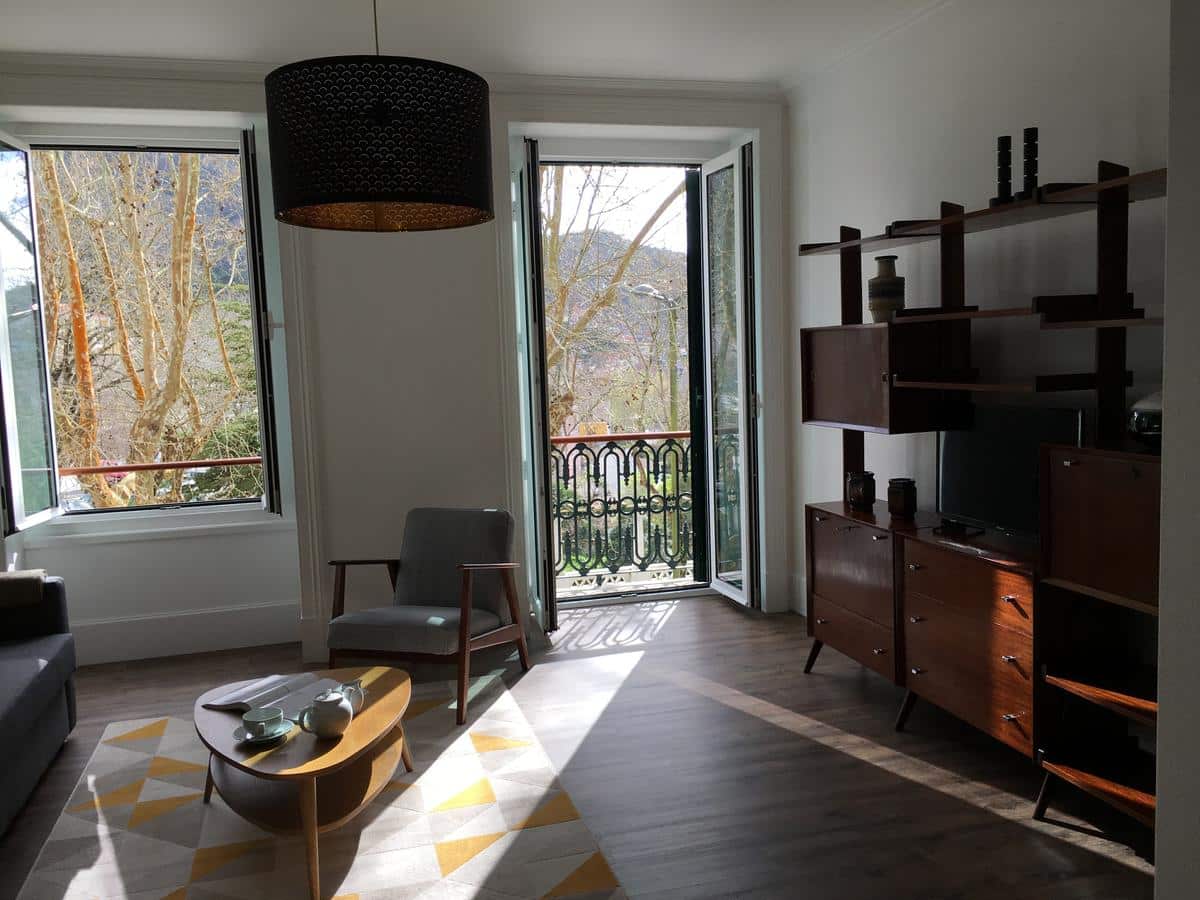
Villa Alba in Sintra provides guests with fully equipped apartments and garden views.
Located 1.3 km from Quinta da Regaleira and 1.3 km from Sintra National Palace it also has on the ground floor a delicious ice cream parlour
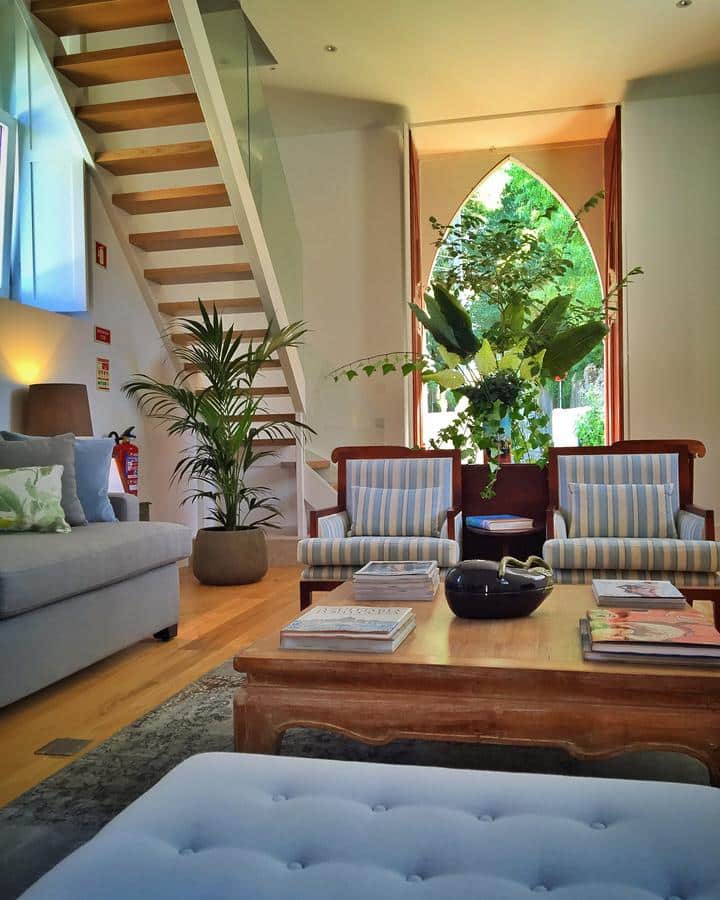
A converted 18th-century chapel, in Sintra, that maintained its Gothic architecture combined with elegant interior décor. Outdoors, a sunny furnished terrace invites guests to relax
It is just a 5-minute walk from Sintra Train Station and 500 m from Sintra Electric Beach Tram stop.
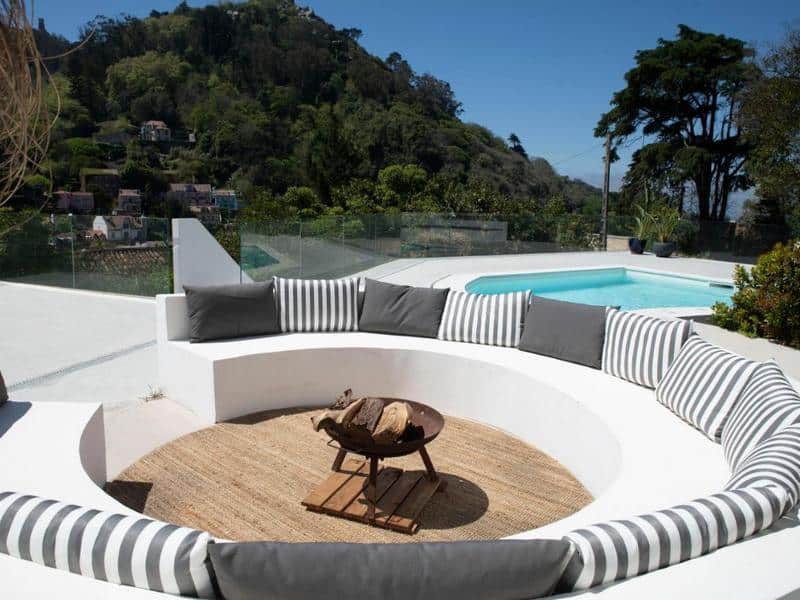
A Rural tourism in Sintra, 800 meters from Castelo dos Mouros and less than 1 km from the, Palácio Nacional de Sintra. The Cedros Nature House offers a private bathroom in all units, a garden with stunning views over the palaces, a terrace, an outdoor swimming pool and a bar.
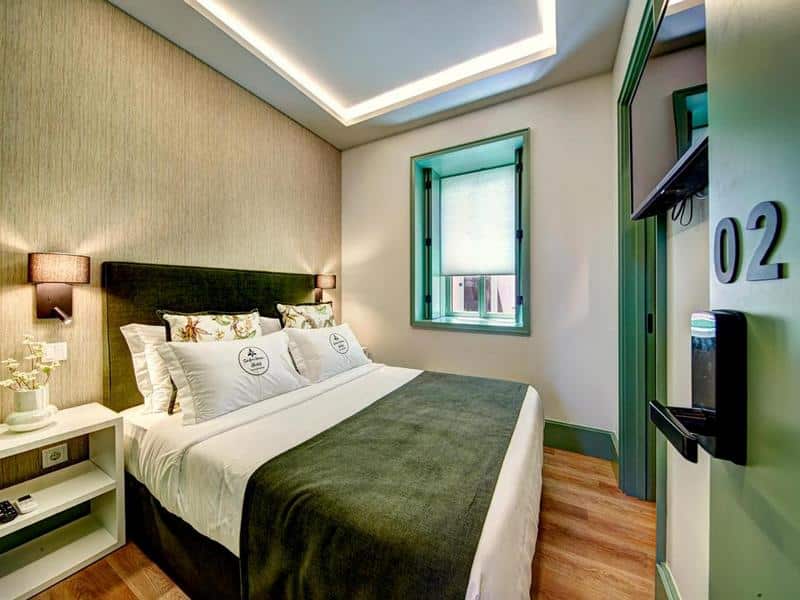
Sintra Green Chalet is located in Vila de Sintra, a 10-minute walk from the Historic Center. A modern but cosy building on 2 floors, with 9 rooms, breakfast room, garden and terrace.
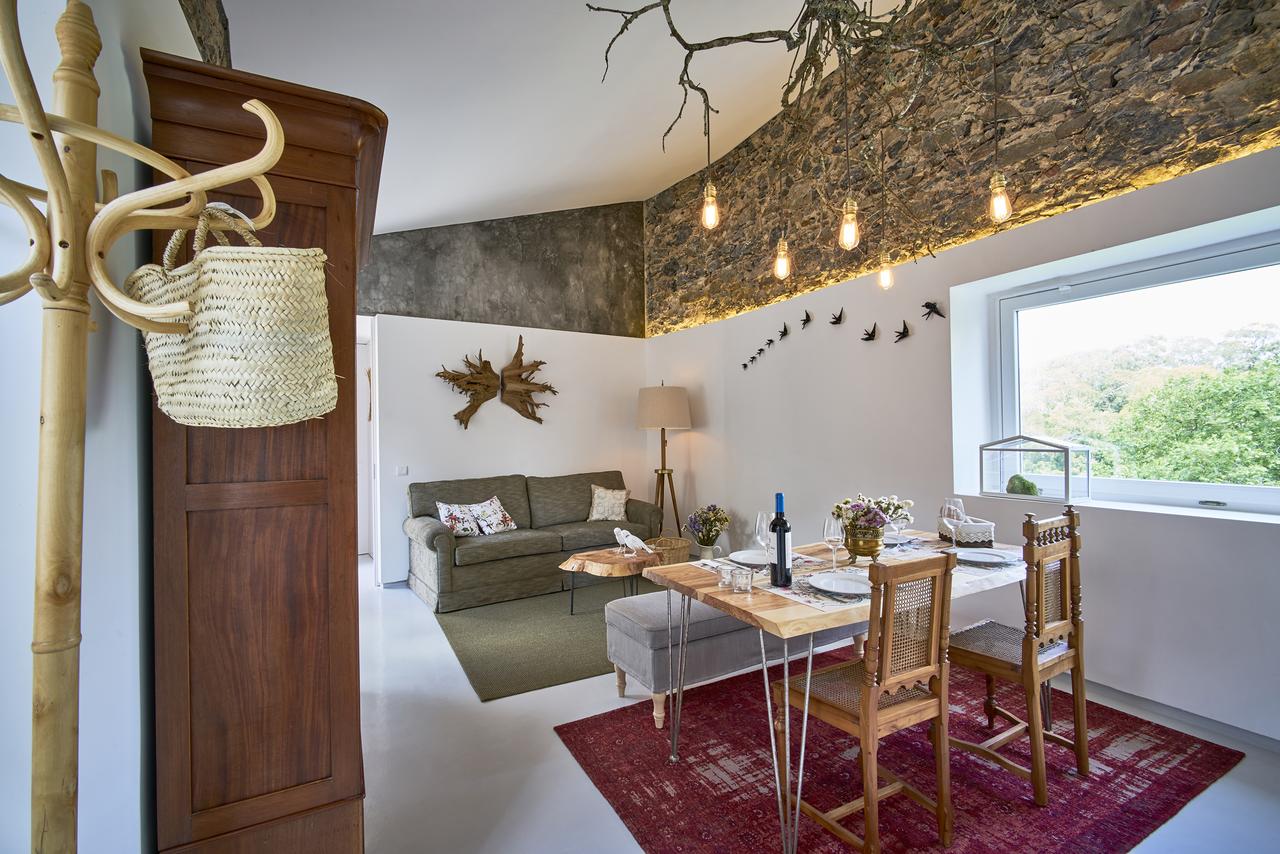
Sparrow Sintra Nest is a completely refurbished design townhouse, right in the centre of Sintra village. Located in a very quiet non-traffic street, just 250 m away from the train station, that come directly from Lisbon and also the bus stops, all in a walking distance. It is a fully equipped nest, with all amenities and a relaxing patio.
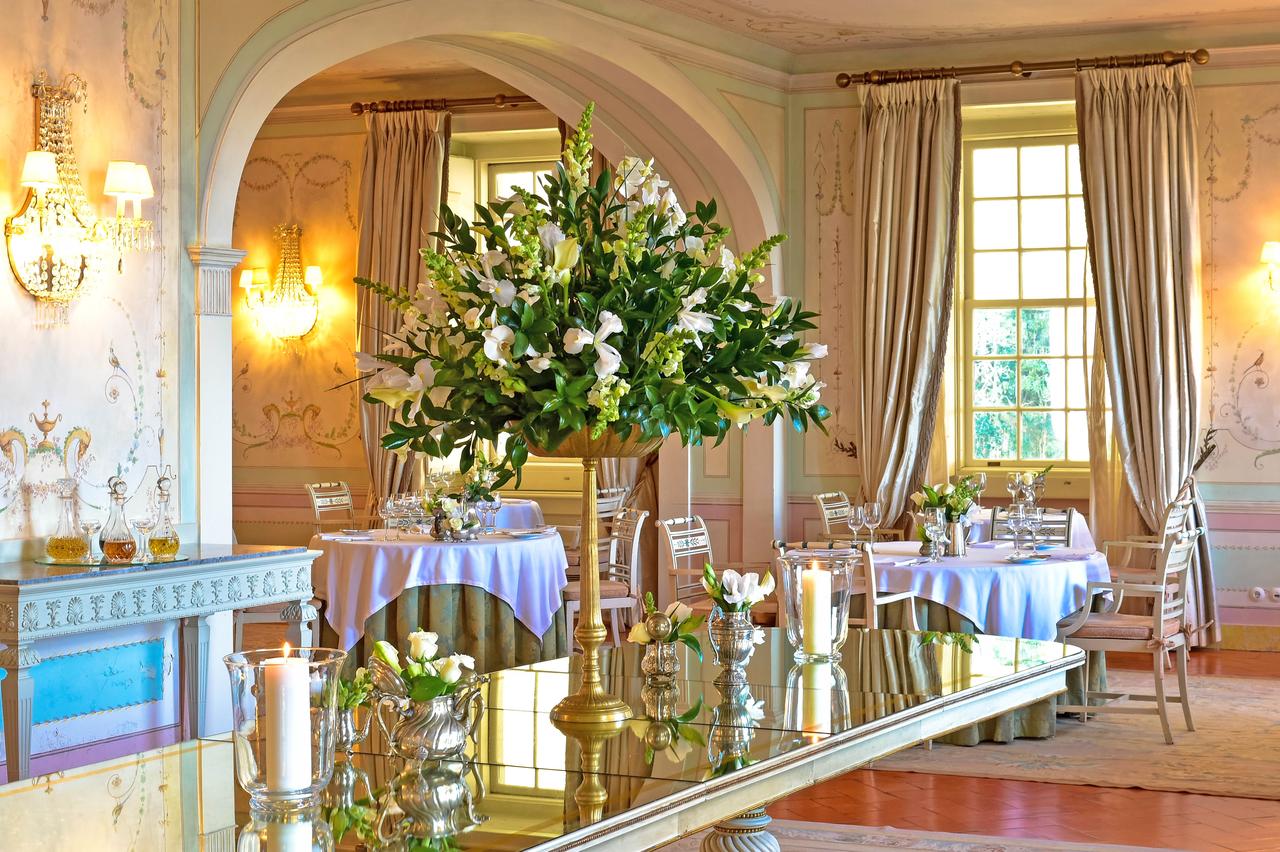
Tivoli Palácio de Seteais is an elegant 5-star fairytale palace set in the mountainside of Sintra. Within walking distance from all major sites it offers a swimming pool, tennis courts beautiful gardens and royal charm
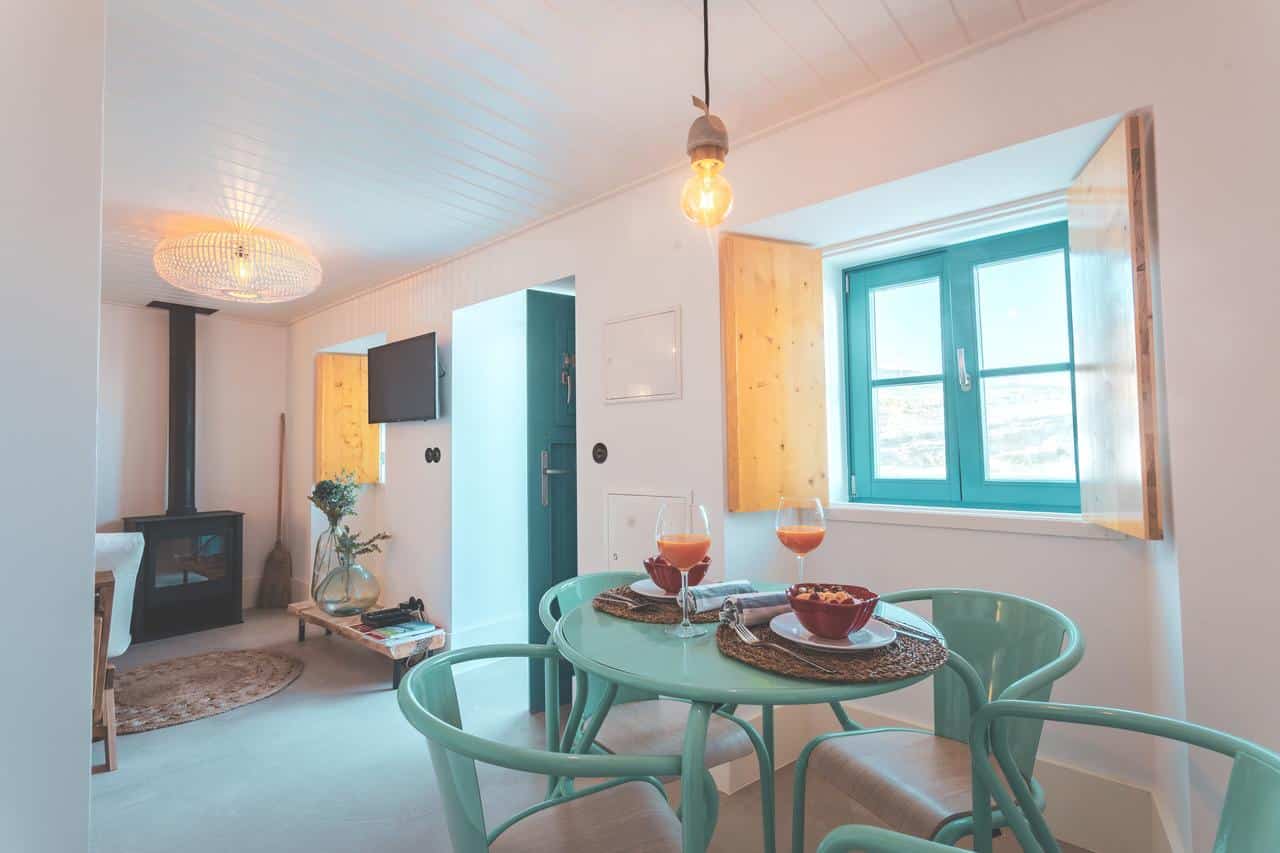
Azenhas do Mar West Coast Design and Surf Villas embrace the concept of “Love and a Cabin”, all that you need to be happy. Away from the hassle of the tourists’ crowds, it offers a secluded hideaway near the beach and surrounded by beautiful scenery. To make the most of your stay, having a car here is highly recommended.
What to visit in Sintra, the kings chosen resort